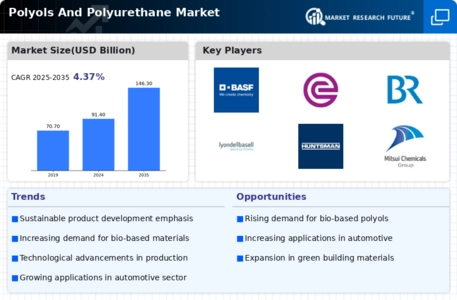Polyols And Polyurethane Market Summary
The global polyols and polyurethane market is projected to grow from 91.37 USD billion in 2024 to 146.29 USD billion by 2035.
Key Market Trends & Highlights
Polyols And Polyurethane Key Trends and Highlights
- The market is expected to achieve a compound annual growth rate (CAGR) of 4.37 percent from 2025 to 2035.
- By 2035, the market valuation is anticipated to reach 146.3 USD billion, reflecting robust growth potential.
- in 2024, the market is valued at 91.37 USD billion, indicating a strong foundation for future expansion.
- Growing adoption of sustainable materials due to increasing environmental regulations is a major market driver.
Market Size & Forecast
| 2024 Market Size | 91.37 (USD Billion) |
| 2035 Market Size | 146.29 (USD Billion) |
| CAGR (2025-2035) | 4.37% |
Major Players
BASF, Dow, Evonik, Bayer, LyondellBasell, Huntsman, Mitsui Chemicals, Covestro, INEOS, Toray Industries, Momentive Performance Materials, DIC Corporation, Wanhua Chemical, Sumitomo Chemical























Leave a Comment